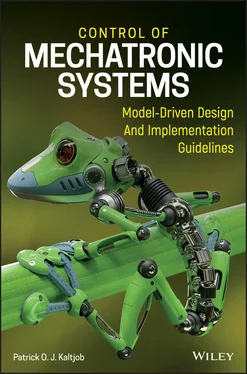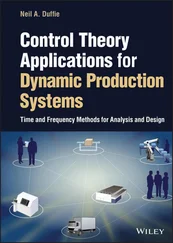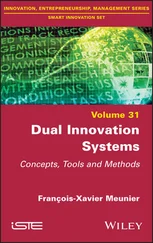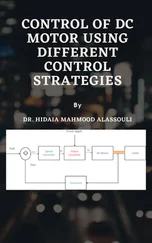This book makes extensive use of MATLAB® routines, distributed by Mathworks, Inc. A user with a current MATLAB license can download trial products from their website. Someone without a MATLAB license can fill out a request form on the site, and a sales rep will arrange the trial for them. For additional MATLAB product information, please contact:
The MathWorks, Inc.
3 Apple Hill Drive
Natick, MA, 01760-2098 USA
Tel: 508-647-7000
Fax: 508-647-7001
E-mail: info@mathworks.com
Web: www.mathworks.com
About the Companion Website
This book is accompanied by a companion website which aims to support the teaching efforts of instructors through:
(email author at kaltjob@uwalumni.comto have FREE access to the secured website)
The website includes:
1 Lectures material for following courses package:Digital control systemsInstrumentation: sizing and selection sensors and actuatorsMechatronic systems designProcess automation and monitoringAdvanced control systems: predictive, distributed, adaptive control strategiesElectric motor/machine control: stepper, DC, AC/inductionControl and instrumentation
2 For each course listed above reading guides, other classroom resources (visual summary, course outlines/summary, animation slides);
3 For each lecture session, multiple choice questions, for each course sample exams;
4 for each Textbook chapter, solution manual, study questions, flash cards;
5 Solved real-life problems and projects, 2D and 3D applications for sessions of laboratory simulation.
1 Introduction to the Control of Mechatronic Systems
1.1 Introduction
The rapid expansion of automated electrically-driven systems (e.g. electromechanical machines) is related to the development of digital control strategies in order to enhance their performance and extend their functionality while significantly reducing their operating cost and complexity. However, those digital control strategies are dependent on the performance of the control instrumentation related to measurement, signal conditioning, actuating, and digital control technologies. Recent technology advancements offer a plethora of control systems instrumentation, each with design-specific requirements and compliance constraints. Hence, in addition to system modeling, the design of digital control strategies has to consider: (i) the selection of control instrumentation in accordance with performance objectives; and (ii) the integration of the control systems instrumentation and process equipment with respect to operating constraints.
Consequently, it is suitable to lay out a generic design procedure for digital control systems, especially in: (i) controlling electrically-driven systems; (ii) sizing and selecting control instrumentation related to information processing and computing, electrically-driven actuation, process sensing and data acquisition; (iii) integrating those control instrumentation with respect to controlled system performance objectives and operating constraints; and (iv) integrating multifunctional control applications.
In this chapter, the definition and classification of electrically-driven systems and technical processes are presented first. Then the functional relationship between electromechanical machine control and control within interconnected and synchronized electromechanical systems is outlined. Various components of control systems instrumentation are described along with their design requirements. Furthermore, major steps of control system migration projects are presented with some illustrative examples of industrial process control. Finally, key project management steps and the associated subsequent design documents are listed.
1.2 Description of Mechatronic Systems
Mechatronic systems are either electrically-driven products or technical processes. Electrically-driven products are machines transforming current, voltage, or other electrical power into mechanical, fluidic, pneumatic, hydraulic, thermal, or chemical power. Hence, those systems can be classified according to their functional objectives either as: (i) specialized machines performing specific operations; or (ii) multipurpose and adjustable machines. Control systems are a set of technologies enabling algorithmic computing or signal processing devices to use signals emitted from analog or digital detecting, sensing, and communicating devices in order to perform automatic operations of systems or process actuation. Such systems are expected to perform them routinely and independently of human intervention with a performance superior to manual operation.
Thus, control systems aim to provide the necessary input signals to achieve the desired patterns of variations of specific process variables. Therefore, the functions of control systems are embedded in electromechanical systems (machine or product control).
Figure 1.1shows a typical 3D printing robot for customized cooking with speed- and temperature-controlled system which could be combined with monitoring indicators for cooking time and cooking stage, as well as a control panel allowing the selection of the final mixing of the product and cooking program. This system would require:
1 the angular position control of a pressure valve delivering semi-liquefied food (paste), the x-y axis position control of the carriage driving the extruder head (nozzle) made of two motors with a screw mechanism, the table angular speed and the z-axis position control;
2 the heater temperature control (nozzle level);
3 the remote pressure and force control for the valve in charge of injecting pressured food paste feed based on environmental (e.g. space mission) and biological conditions (e.g. lower gravity forces); and
4 the logic control for the discrete selection of ingredients.
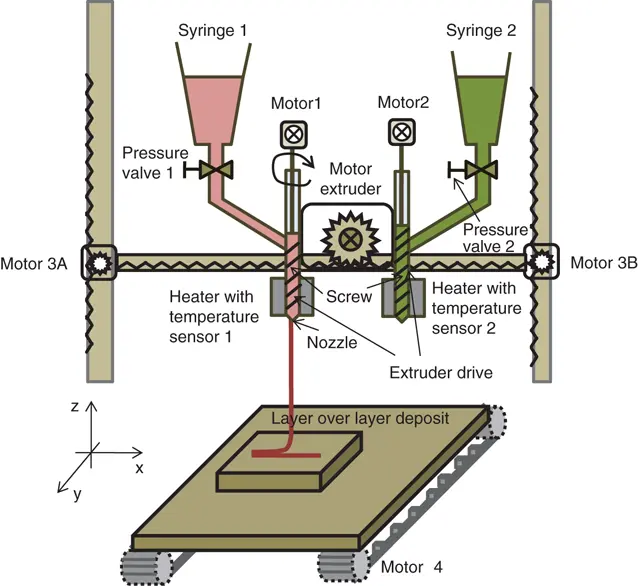
Figure 1.1 Customized 3D food printer.
Such control design combination enhances the product or machine functionality while reducing operating and maintenance costs. This is done by integrating data processing and computing operations within a field device or machine (e.g. washing machine, navigation systems etc.). Among the commonly encountered automated machines or products are those with: (i) embedded control functions; (ii) dedicated control functions; or (iii) a control function limited to a couple of sensors and actuators involved.
A technical process is the sum of all interacting machines within that process transforming and/or storing material, energy, or information. Such technical processes can be classified according to their operational objectives as follows:
1 Transportation-related processes, such as material handling processes, energy flow processes, and information transmission processes.
2 Transformation-related processes, such as chemical processes, manufacturing processes, power generation, and storage processes.
Technical processes can be characterized according to functional objectives, such as:
1 Processes characterized by a continuous flow of material or energy (e.g. cement drying process, electric power distribution, paper production). Here, the process variables are physically-related variables with a continuous range of values, such as temperatures in a heating system. The process parameters are physical properties (e.g. power transmission network impedance, liquefied gas density). Process control consists of maintaining the process state on a determined level or trajectory. In this case, process dynamics models can be obtained through differential equations.
Читать дальше
